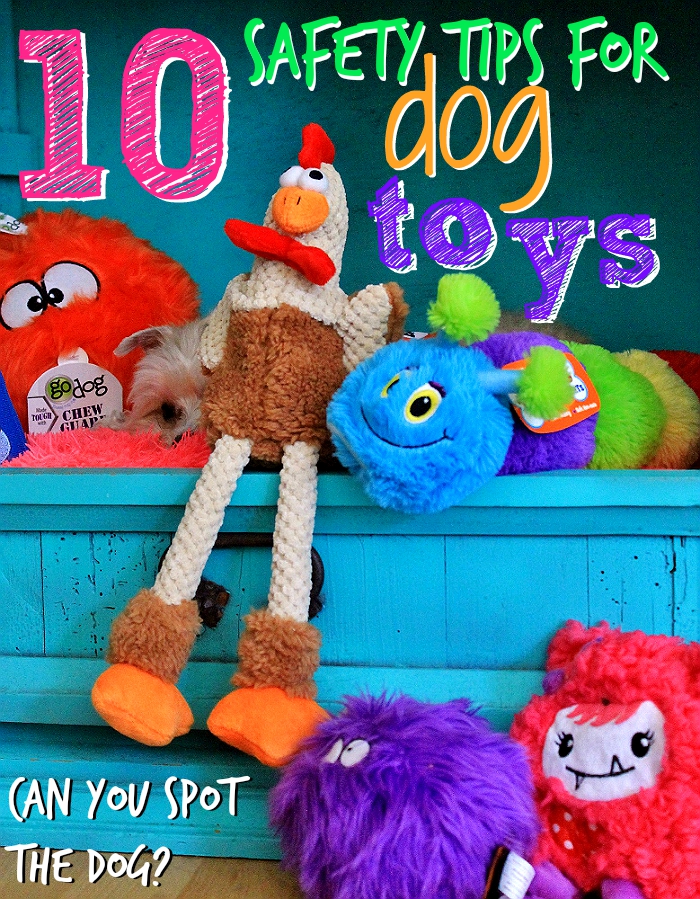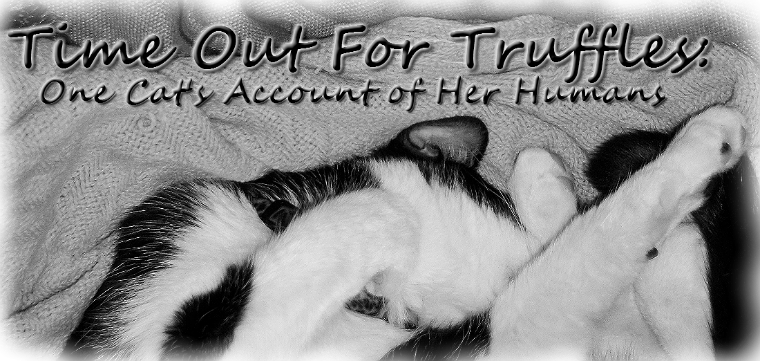
If you ever were scolded for getting into your mother's makeup, or giving your father's best suit a new, arguably more fashionable, design a-la-Crayola, you likely didn't understand why your parents were being so mean at the time. After all, why do all the adults get to have all the fun? Being a pet parent is very much like being a human parent, only fur-children seldom ever grow up, never move out, and will always require you to clean up their poop. Fur children come in all shapes and sizes, but all require their own defined selection of toys. Not just for the safety of your Italian loafers, but for their safety as well.

She is 'spot trained,' which means she understands surface boundaries and will not leave a dog bed/rug/chair/blanket's surface if set directly down on it. She also knows not to chew on anything with a tag. Yes, even dog toys. Something I find especially important for her safety, as tags, and their attaching devices, can be a serious choking hazard for small dogs. In exchange, she is provided hours of attention each day, walks on the beach, her own personal cat (every dog needs an arch nemesis) and countless accessories and toys.

Tip #1: Remove all tags before giving a toy to your dog. This includes 't-shirt' style tags that are generally made of nylon or cloth and loop out from a toy's base. Paper tags, in particular are often attached with small plastic tabs that pose a serious choking hazard if lodged in a small animal's windpipe. Because Nora has been involved in pet photography since she was a puppy, we also trained her to 'leave it' if she comes across a dog toy with a tag still on. This is the same basic training concept as requiring a dog to ignore their food until given verbal or visual permission.
Sometimes fluffy toys, like the critters featured here, will have a small plastic hanging tab that is used to display products in store. Thoroughly inspect all toys for additional packaging before giving them to your pup.

Tip #3: Inspect toys for small parts. Don't assume, just because something is marketed as a dog toy, your dog's toys are safe for them to play with. Toys are often given to dogs with the intention of being chewed up. You know your dog's strength and play style more than anyone, exercise judgement when picking out the right toys for your pet.
Tip #4: Consider your dog's size when selecting the right toy. While a 150lb German shepherd might play with a toy designed for a 5lb yorkie, it should not be considered safe. Dog toys are designed for breeds and weights for a reason- read labels for suggested weight and size limits before giving your dog any toys.

Tip #6: If the stuffing of a toy becomes exposed, remove the toy from the dog's playthings immediately. While sewing a toy up may be a fine temporary fix, even the best seam repairs will end up ripping again. Don't be fooled, even a tiny amount of batting or stuffing can cause slow blockages inside your dog. A torn toy, without stuffing, can be just as enjoyable as one with stuffing. And always remember to remove the squeaker as soon as a toy is torn.


Tip #8: Check child safety warnings. You may not know but most pet toys contain safety warnings for children. If a dog's plush toy doesn't say it's safe for children under 3 years, it probably poses a larger risk for your pet. At the same time, you should always observe the above safety practices with dog toys, regardless of child safety advisories.
Tip #9: Consider hard rubber toys, such as Kong or JJ Pet brands, instead of raw hide chews. Not only do rawhide based toys and chews pose a choking hazard, they can also have extended long term effects on your pet. Consult with your veterinarian before giving your dog rawhide chews.

Naturally, most of these tips are good to follow for human children as well; you can never be too safe when handing things over to loved ones for play. Nora's rooster has become one of her favorite snuggle and chew toys with it's playful long legs (perfect for tug-o-war) and tear resistant double lining. What's one of your dog's favorite toys?
For more great articles on pet safety check out some of my favorite pet blogs!
- How to Choose the Right Car Pet Safety Harness by Other People's Pets
- Pet Safety Infographic by Callista's Ramblings
- 5 Safety Tips for Travelling with Your Dog in the Car by Dogurday
- 10 Safety Tips for Dog Toys by Time Out for Truffles
- Caring for Ferals in the Summer: Keeping Kitties Safe in The Blazing Hot Sun by Pretty Opinionated
- Stress in Dogs: It's Far More Dangerous Than It Seems! by DogVills
- 6 Ways to Keep Your Dog and Kids Safe When They Meet by Lincoln the French

